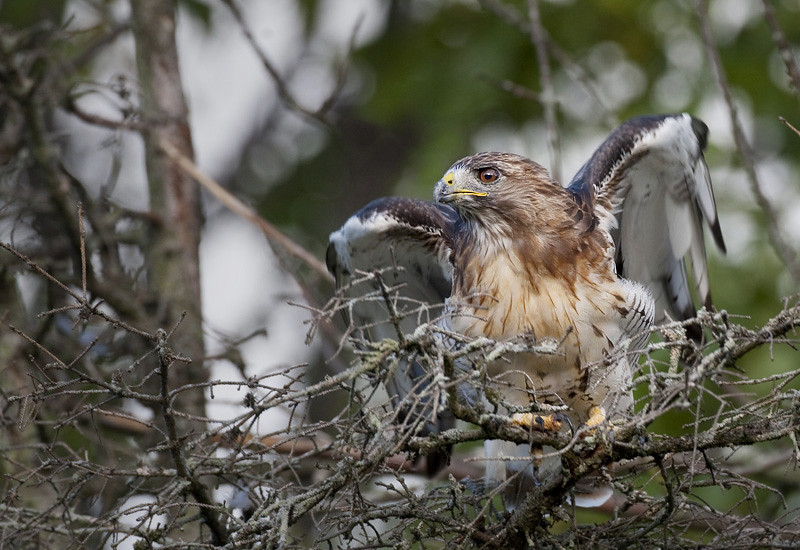
by Scott Martin Photography | Sep 8, 2010 | Birds, Blog, Raptors
Deb & I visited Presqu’ile Provincial Park in Brighton, Ontario late Sunday afternoon and found this adult Red Tailed Hawk. We watched this large raptor for about twenty minutes and as he’d just captured a meal he let us get quite close. Although we took a lot of shots, these two show completely different looks of the same bird, because of the poses and the lighting. The first is taken in ‘open shade’ meaning bright enough to take a shot however no direct sunlight. Open shade allows for the feather detail to be well illustrated and also allows for subtle colour hues to be seen. The second is taken in direct sunlight, which in this case is OK as it was just before sunset so there are no harsh shadows and the evening light has a ‘warmth’ or reddish cast which is generally appealing. The sunlight also adds a nice catch light in the eyes. When shooting in direct sunlight it is always best to work in the first two hours after sunrise and then again in the last two hours before sunset.
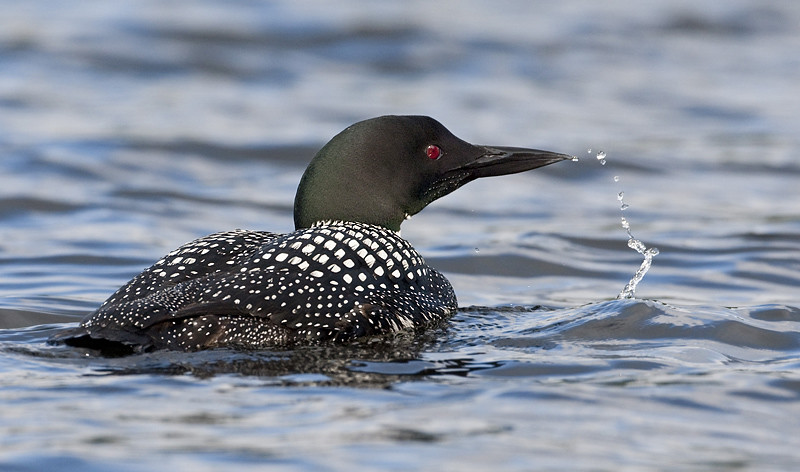
by Scott Martin Photography | Aug 31, 2010 | Birds, Blog, Loons
It was a pleasure for Deb & me to spend a lot of time photographing the Common Loons in Algonquin Park this summer and I hope you have enjoyed them. In the next month or so the Loons which are normally very territorial begin to congregate in the Algonquin Lakes in preparation for their annual southern migration, which is generally completed by November. The males normally leave earlier than the females & juveniles (as it is with Hummingbirds too) presumably because the juveniles need more time to grow & mature prior to migration.
These last images feature water drops which are always fun to photograph. I’m already looking forward to next years ‘Loon Season’.
All images taken with a Canon 1D MkIII and 500 f/4 Lens, hand held from a canoe.
…and a solitary drop for the last image.

by Scott Martin Photography | Aug 26, 2010 | Birds, Blog, Loons
Only the male Loon yodels, and the yodel is his territorial vocalization. Apparently each male yodel is distinct and can be used like an audible fingerprint. To yodel the Loon fully extends its neck and enlarges the throat in order to create a type of percussion chamber. It then presses and moves its tongue into the roof of the beak to help make the pitch changes during the yodel. It is thought that as the Loons grow in size their yodel pitch lowers as the throat volume increases. During one of the many hours Deb & I spent in a canoe with Loons this summer, we observed a new male fly in and land in the area of the pair we were watching (presumably to fish). This immediately caused the resident male to head towards the ‘intruder’ and start yodeling. The visitor left as quickly as he came and headed off elsewhere to fish. Here is a shot of the yodeling male taken as he passed by our canoe. Its amazing how loud the yodel is from 30′.

by Scott Martin Photography | Aug 25, 2010 | Birds, Blog, Loons
The processing of numerous CF cards of Loon shots continues but is starting to wind down and at this point all the ‘keepers’ have been converted from RAW to jpegs. Shooting in RAW is very important all the time however is especially important when shooting a bird with dark & light areas such as a Loon. Although you can get away with some over-exposure on the white spots on the Loon’s back, over-exposing the large white chest can ruin a lot of otherwise good images. Always check your camera’s histogram to make sure you are not over-exposing the whites, shoot in RAW and thereby retain the ability to adjust the exposure in post processing….this can keep lots of shots from going directly into the round file 🙂
Loons are one of those birds that look good from any angle, even from the back.
.
.
.
And a tight crop of the back, taken from an original image that had both wings clipped as the Loon came too close to our canoe to fit in the frame.
.
Loons are only ever on a nest to incubate eggs, which takes about three to four weeks. The nests are always adjacent to the water.

.
.
Thanks so much to all those who have commented on the blog. A special thanks to Arni a great photographer friend who has helped get me into the world of blogging and given much advice to help me improve. You can visit his blog and website at Nature’s Wonder In Pixels – Arniworks Photography

by Scott Martin Photography | Aug 12, 2010 | Birds, Blog, Loons
These two images of Loon chicks were taken in early August and are a first for me. They were taken in the rain, late in the afternoon, so the light was very poor. We paddled out into the middle of a lake in Algonquin Park to take them. Getting absolutely soaked to take pictures in poor light wasn’t the most fun we’ve ever had, but hopefully next summer will be better, if Deb ever gets into a canoe with me again 🙂 It was still a thrill to have the opportunity to see the chicks up close. Based on their size they would be about two weeks old.
The proud Mom with her two little ones;
Feeding time;

by Scott Martin Photography | Aug 5, 2010 | Birds, Blog, Loons
My wife and I spent at least four Fridays this summer canoeing in Algonquin Park photographing Common Loons, or as they are called in Europe Northern Divers. A number of these images can be seen at www.scottmartinphotography.ca however I still have hundreds more images that need to processed, and the best ones will be posted here over the next few weeks.
This Loon was sitting on two eggs which have an incubation period of three to four weeks. This is the only time Loons ever spend on the nest. From the time the chicks are born, they live on the water 24/7. As Loons can’t walk on land (their feet are too far back on their bodies so they are resigned to push themselves on their chest) the nests are always at the water’s edge allowing them to easily slide into the water where they are experts. Loons have been known to dive to depths of 200′ while fishing, which they are able to do because of the way their feet are positioned. God designed Loons for the water!
The red eye and iridescent colouring on the head and neck are truly special to see up close.
These shots were all taken hand held from a canoe with a Canon 1D MkIII and 500 f/4 lens.



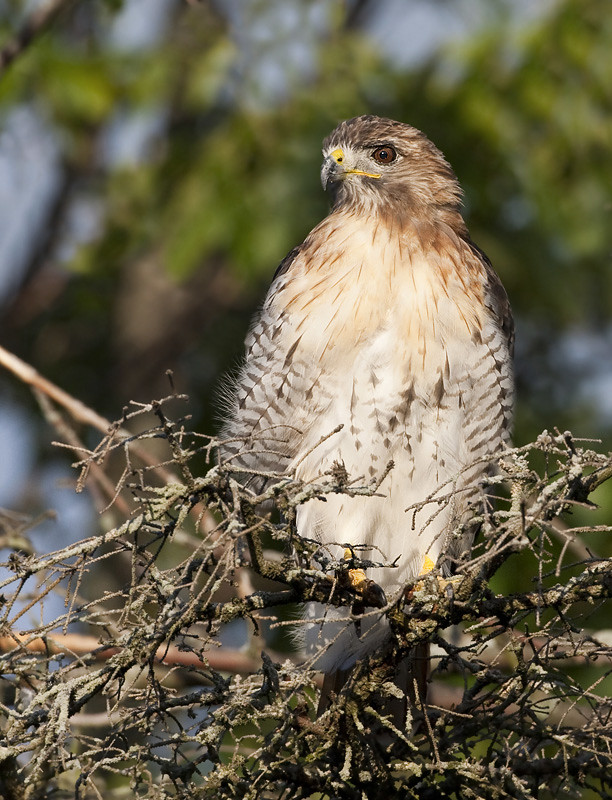


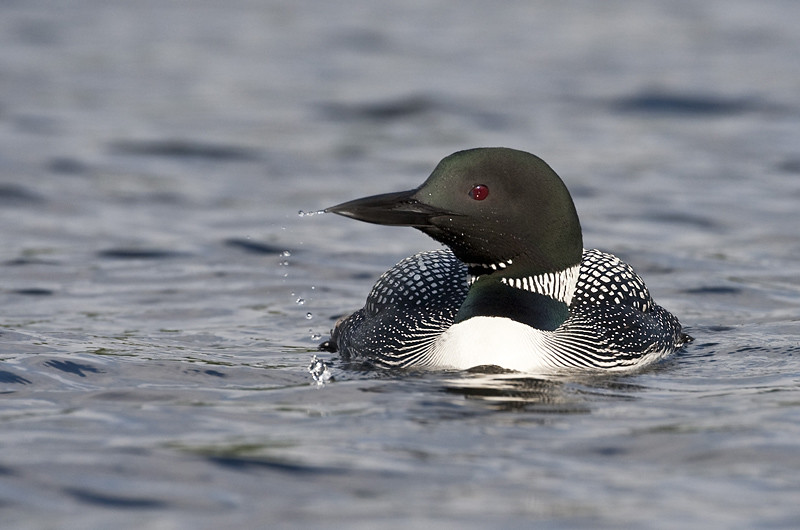

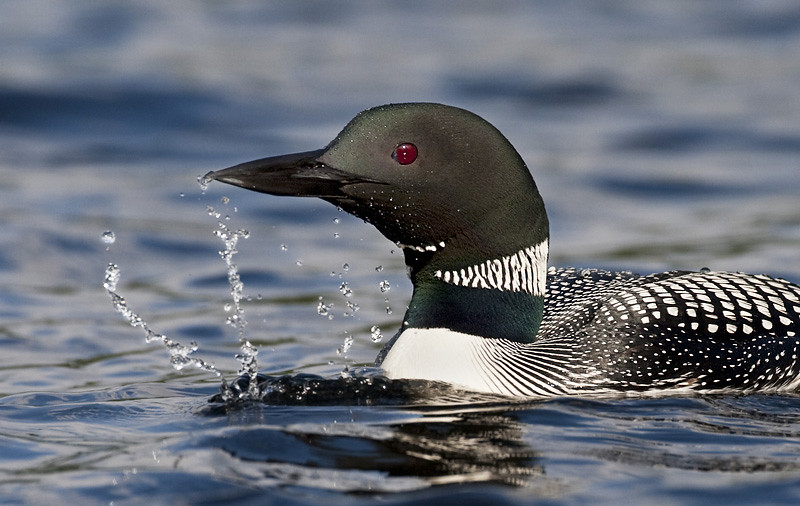

















Follow Scott Martin Photography